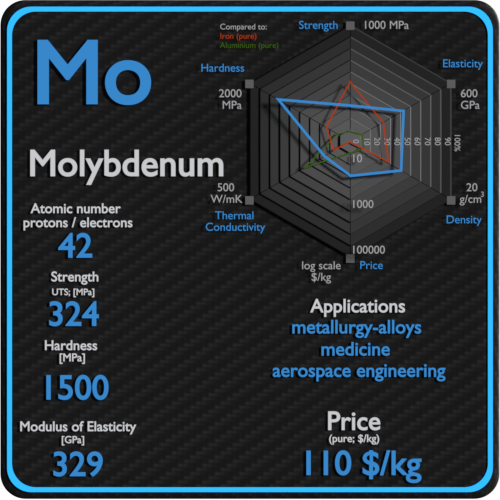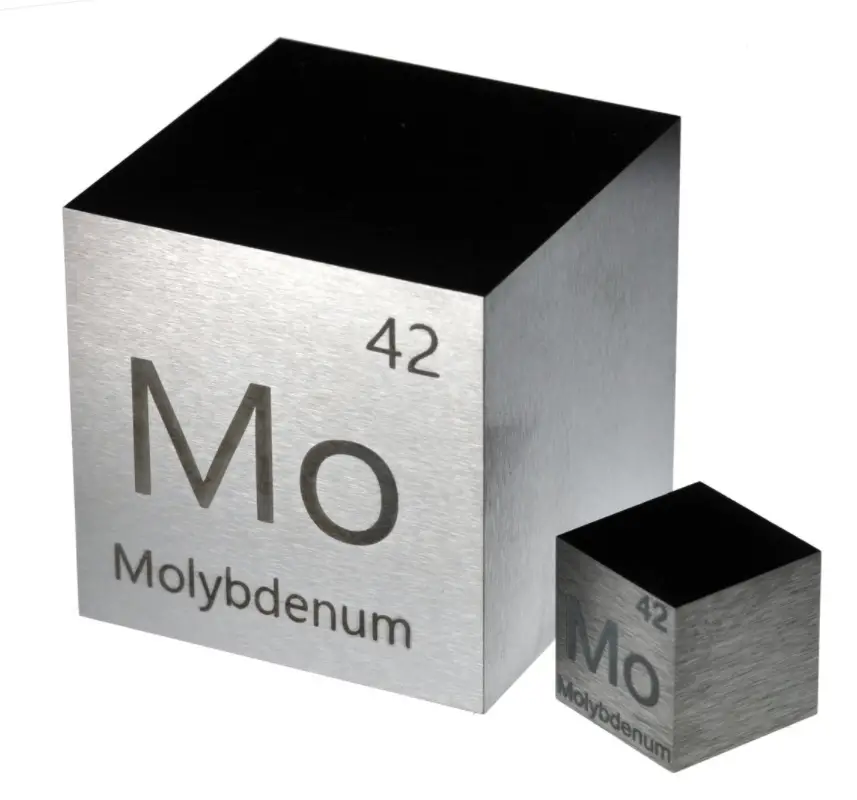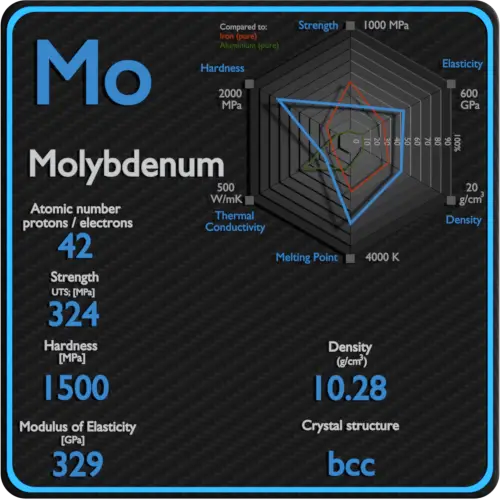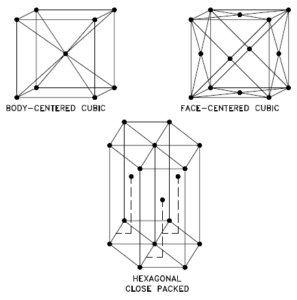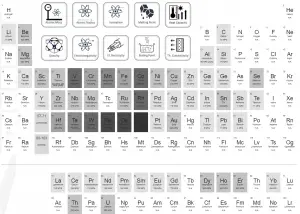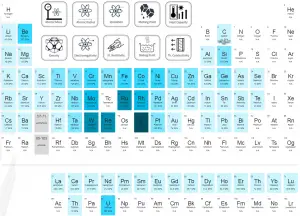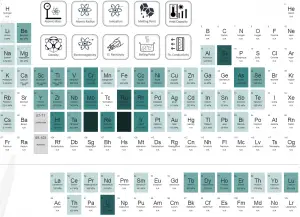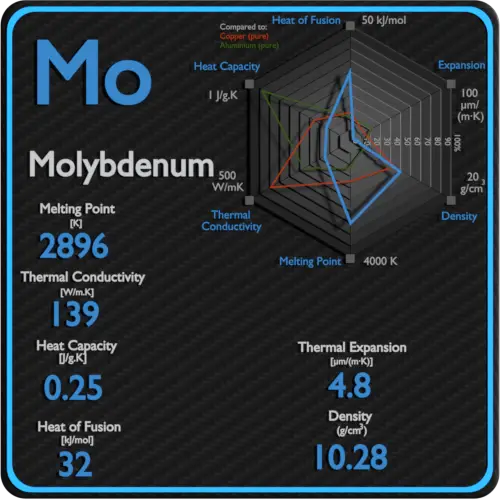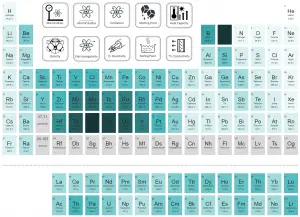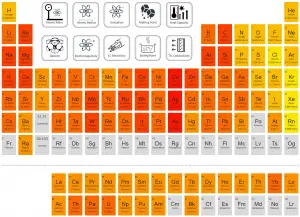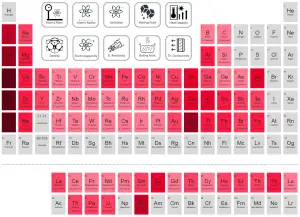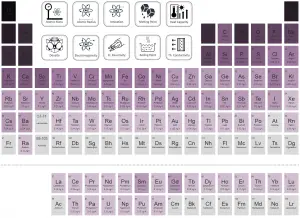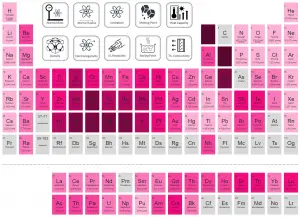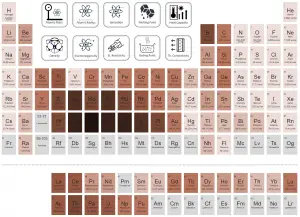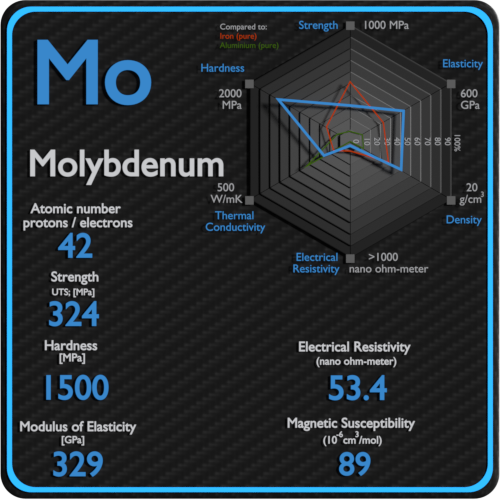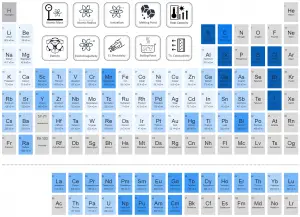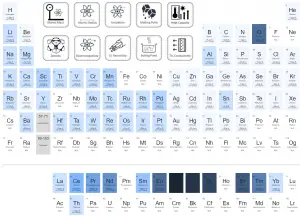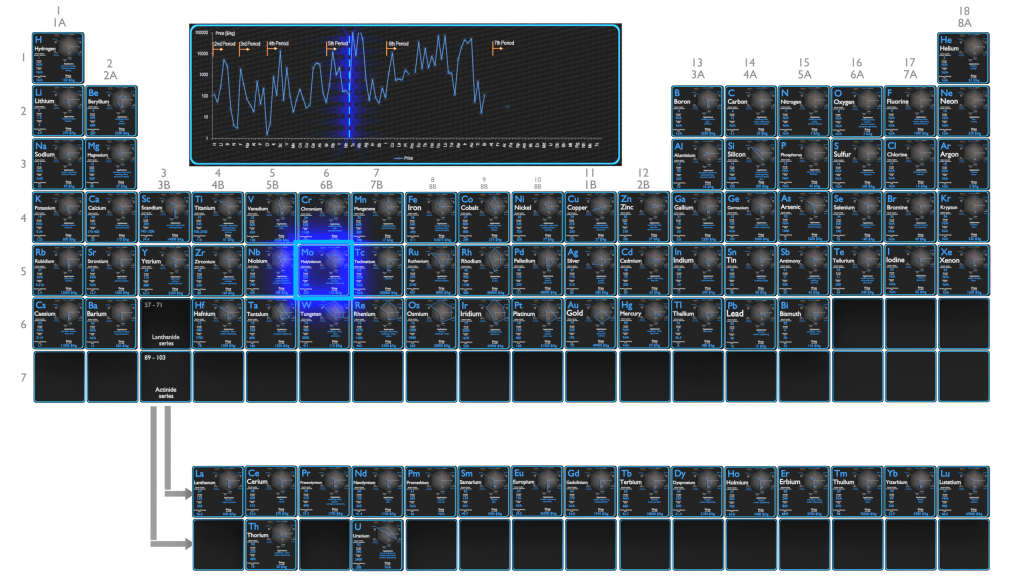About Molybdenum
Molybdenum a silvery metal with a gray cast, has the sixth-highest melting point of any element. It readily forms hard, stable carbides in alloys, and for this reason most of world production of the element (about 80%) is used in steel alloys, including high-strength alloys and superalloys.
Summary
| Element | Molybdenum |
| Atomic number | 42 |
| Element category | Transition Metal |
| Phase at STP | Solid |
| Density | 10.28 g/cm3 |
| Ultimate Tensile Strength | 324 MPa |
| Yield Strength | N/A |
| Young’s Modulus of Elasticity | 329 GPa |
| Mohs Scale | 5.5 |
| Brinell Hardness | 1500 MPa |
| Vickers Hardness | 1530 MPa |
| Melting Point | 2623 °C |
| Boiling Point | 4639 °C |
| Thermal Conductivity | 138 W/mK |
| Thermal Expansion Coefficient | 4.8 µm/mK |
| Specific Heat | 0.25 J/g K |
| Heat of Fusion | 32 kJ/mol |
| Heat of Vaporization | 598 kJ/mol |
| Electrical resistivity [nanoOhm meter] | 53.4 |
| Magnetic Susceptibility | +89e-6 cm^3/mol |
Applications of Molybdenum
About 86% of molybdenum produced is used in metallurgy, with the rest used in chemical applications. The estimated global use is structural steel 35%, stainless steel 25%, chemicals 14%, tool & high-speed steels 9%, cast iron 6%, molybdenum elemental metal 6%, and superalloys 5%. Molybdenum (about 0.50-8.00%) when added to a tool steel makes it more resistant to high temperature. Molybdenum increases hardenability and strength, particularly at high temperatures due to the high melting point of molybdenum. Molybdenum is unique in the extent to which it increases the high-temperature tensile and creep strengths of steel. Molybdenum anodes replace tungsten in certain low voltage X-ray sources for specialized uses such as mammography. The radioactive isotope molybdenum-99 is used to generate technetium-99m, used for medical imaging. The isotope is handled and stored as the molybdate.
Production and Price of Molybdenum
Raw materials prices change daily. They are primarily driven by supply, demand and energy prices. In 2019, prices of pure Molybdenum were at around 110 $/kg.
Molybdenum does not occur native, and is obtained mainly from molybdenite (MoS2). Other minor commercial ores of molybdenum are powellite (Ca(MoW)O4) and wulfenite (PbMoO4). Molybdenum is mined as a principal ore and is also recovered as a byproduct of copper and tungsten mining. The world’s production of molybdenum was 250,000 tonnes in 2011, the largest producers being China (94,000 t), the United States (64,000 t), Chile (38,000 t), Peru (18,000 t) and Mexico (12,000 t).
Source: www.luciteria.com
Mechanical Properties of Molybdenum
Strength of Molybdenum
In mechanics of materials, the strength of a material is its ability to withstand an applied load without failure or plastic deformation. Strength of materials basically considers the relationship between the external loads applied to a material and the resulting deformation or change in material dimensions. In designing structures and machines, it is important to consider these factors, in order that the material selected will have adequate strength to resist applied loads or forces and retain its original shape. Strength of a material is its ability to withstand this applied load without failure or plastic deformation.
For tensile stress, the capacity of a material or structure to withstand loads tending to elongate is known as ultimate tensile strength (UTS). Yield strength or yield stress is the material property defined as the stress at which a material begins to deform plastically whereas yield point is the point where nonlinear (elastic + plastic) deformation begins.
See also: Strength of Materials
Ultimate Tensile Strength of Molybdenum
Ultimate tensile strength of Molybdenum is 324 MPa.
Yield Strength of Molybdenum
Yield strength of Molybdenum is N/A.
Modulus of Elasticity of Molybdenum
The Young’s modulus of elasticity of Molybdenum is N/A.
Hardness of Molybdenum
In materials science, hardness is the ability to withstand surface indentation (localized plastic deformation) and scratching. Brinell hardness test is one of indentation hardness tests, that has been developed for hardness testing. In Brinell tests, a hard, spherical indenter is forced under a specific load into the surface of the metal to be tested.
Brinell hardness of Molybdenum is approximately 1500 MPa.
The Vickers hardness test method was developed by Robert L. Smith and George E. Sandland at Vickers Ltd as an alternative to the Brinell method to measure the hardness of materials. The Vickers hardness test method can be also used as a microhardness test method, which is mostly used for small parts, thin sections, or case depth work.
Vickers hardness of Molybdenum is approximately 1530 MPa.
Scratch hardness is the measure of how resistant a sample is to permanent plastic deformation due to friction from a sharp object. The most common scale for this qualitative test is Mohs scale, which is used in mineralogy. The Mohs scale of mineral hardness is based on the ability of one natural sample of mineral to scratch another mineral visibly.
Molybdenum is has a hardness of approximately 5.5.
See also: Hardness of Materials
Molybdenum – Crystal Structure
A possible crystal structure of Molybdenum is body-centered cubic structure.
In metals, and in many other solids, the atoms are arranged in regular arrays called crystals. A crystal lattice is a repeating pattern of mathematical points that extends throughout space. The forces of chemical bonding causes this repetition. It is this repeated pattern which control properties like strength, ductility, density, conductivity (property of conducting or transmitting heat, electricity, etc.), and shape. There are 14 general types of such patterns known as Bravais lattices.
See also: Crystal Structure of Materials
Crystal Structure of Molybdenum
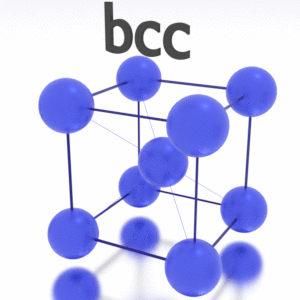
Thermal Properties of Molybdenum
Molybdenum – Melting Point and Boiling Point
Melting point of Molybdenum is 2623°C.
Boiling point of Molybdenum is 4639°C.
Note that, these points are associated with the standard atmospheric pressure.
Molybdenum – Thermal Conductivity
Thermal conductivity of Molybdenum is 138 W/(m·K).
The heat transfer characteristics of a solid material are measured by a property called the thermal conductivity, k (or λ), measured in W/m.K. It is a measure of a substance’s ability to transfer heat through a material by conduction. Note that Fourier’s law applies for all matter, regardless of its state (solid, liquid, or gas), therefore, it is also defined for liquids and gases.
Coefficient of Thermal Expansion of Molybdenum
Linear thermal expansion coefficient of Molybdenum is 4.8 µm/(m·K)
Thermal expansion is generally the tendency of matter to change its dimensions in response to a change in temperature. It is usually expressed as a fractional change in length or volume per unit temperature change.
Molybdenum – Specific Heat, Latent Heat of Fusion, Latent Heat of Vaporization
Specific heat of Molybdenum is 0.25 J/g K.
Heat capacity is an extensive property of matter, meaning it is proportional to the size of the system. Heat capacity C has the unit of energy per degree or energy per kelvin. When expressing the same phenomenon as an intensive property, the heat capacity is divided by the amount of substance, mass, or volume, thus the quantity is independent of the size or extent of the sample.
Latent Heat of Fusion of Molybdenum is 32 kJ/mol.
Latent Heat of Vaporization of Molybdenum is 598 kJ/mol.
Latent heat is the amount of heat added to or removed from a substance to produce a change in phase. This energy breaks down the intermolecular attractive forces, and also must provide the energy necessary to expand the gas (the pΔV work). When latent heat is added, no temperature change occurs. The enthalpy of vaporization is a function of the pressure at which that transformation takes place.
Molybdenum – Electrical Resistivity – Magnetic Susceptibility
Electrical property refers to the response of a material to an applied electric field. One of the principal characteristics of materials is their ability (or lack of ability) to conduct electrical current. Indeed, materials are classified by this property, that is, they are divided into conductors, semiconductors, and nonconductors.
See also: Electrical Properties
Magnetic property refers to the response of a material to an applied magnetic field. The macroscopic magnetic properties of a material are a consequence of interactions between an external magnetic field and the magnetic dipole moments of the constituent atoms. Different materials react to the application of magnetic field differently.
See also: Magnetic Properties
Electrical Resistivity of Molybdenum
Electrical resistivity of Molybdenum is 53.4 nΩ⋅m.
Electrical conductivity and its converse, electrical resistivity, is a fundamental property of a material that quantifies how Molybdenum conducts the flow of electric current. Electrical conductivity or specific conductance is the reciprocal of electrical resistivity.
Magnetic Susceptibility of Molybdenum
Magnetic susceptibility of Molybdenum is +89e-6 cm^3/mol.
In electromagnetism, magnetic susceptibility is the measure of the magnetization of a substance. Magnetic susceptibility is a dimensionless proportionality factor that indicates the degree of magnetization of Molybdenum in response to an applied magnetic field.
